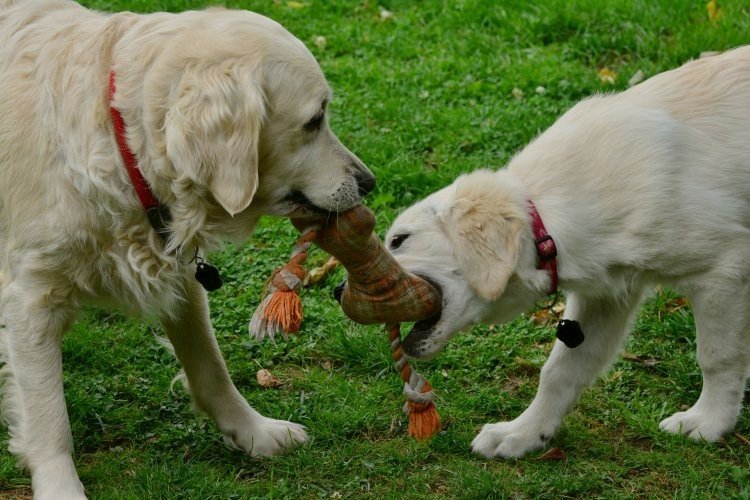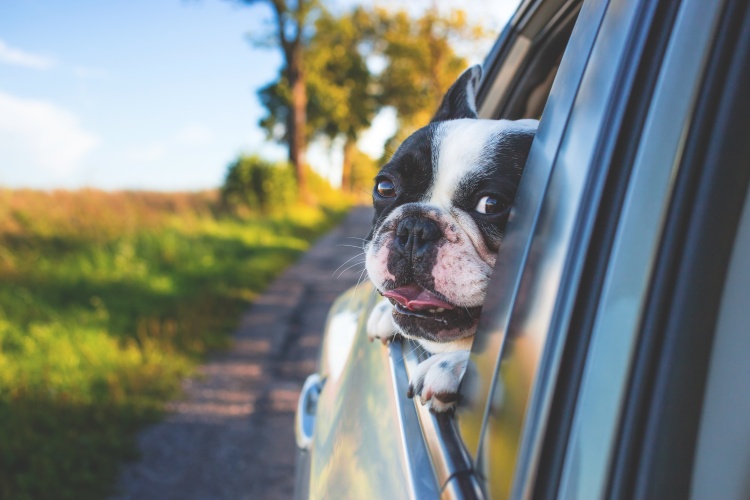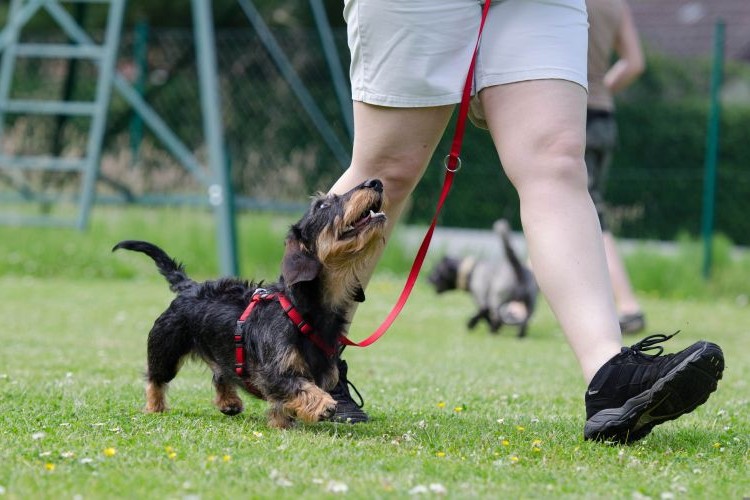Ready to help treat your pet to a healthy life?
My Dog Got Bit by Another Dog. Now What?
By : Kathleen Crampton | Published Oct 1, 2025

You’re at the dog park, your pup has been off playing with another dog, and suddenly you hear a yelp. After scanning the area, you are horrified to see that your dog was bit by another dog.
Bite injuries are one of the most common pet emergencies, and when these stressful scenarios happen, emotions run high and it can be difficult to know what to do to protect your dog and yourself. That’s why, before any incidents occur, it’s crucial to understand the risks involved with a dog bite and the steps to take if it happens.
Why dog bites are dangerous
For dogs bit at the dog park or anywhere else, their bites must be taken seriously — even if the wound looks small. There are several dog bite risks to consider.
Risk of bacterial infection
If your dog is bitten by another dog, the biggest risk is infection. Even if the bite appears to be small or not too deep, the wound can easily become infected. After all, consider the fact that dogs explore with their mouths; there is likely lots of bacteria in the biting dog’s mouth that has been introduced to your dog’s skin.
If you don’t seek veterinary care after the incident, the wound may become infected, fester, and spread to surrounding areas. In severe cases, an infected bite can lead to sepsis if the bacteria reaches the bloodstream.
Risk of rabies
Although the rabies shot is one of the core dog vaccines required in most states, it doesn’t mean that all dogs have gotten it. If your dog is bitten by another dog that’s carrying rabies, the chance of your dog contracting it is high. Once introduced through a bite, the virus travels to the brain, affecting a dog’s nervous system and causing very serious symptoms, like behavior changes, fearfulness, aggressiveness, and seizures.
If your pet has been vaccinated against rabies, they are well-protected against a potential viral infection. But vaccines don’t guarantee 100% effectiveness, meaning that seeking immediate medical attention after a dog bite is vital.
Risk of bone, tissue, or nerve damage
Dogs tend to bite other dogs near the head, neck, or limbs. The head and neck are, of course, sensitive areas, so bites here could affect the mouth, eyes, or ears as well as vital parts of the neck, including the throat, nerves, and blood vessels. There is the risk of damage to bones and joints if a bite occurs on your dog’s leg.
What to do immediately following dog fighting or biting

Dog bites are dangerous for several reasons, so it’s important to know what to do in the moment if you ever find your pup in this situation. Follow these steps if your dog was bit by another dog.
Step 1. Get your dog to safety
If a dog is fighting or biting your dog, don’t try to physically intervene, as this could put you at risk for a dog bite and make the other dog more aggressive. Instead, use the following ideas as safer ways to stop the incident:
- Clap, yell, or make other loud noises to distract the dogs.
- Spray or dump a bottle of water on them.
- Throw a blanket or jacket over them so that they can’t see each other.
- Ask other people, especially the other dog’s owner, to help with these tactics.
Once the situation has de-escalated and you’re not at risk of getting hurt, get your pup to safety, separating them from the biting dog.
Step 2. Gather information from the other dog’s owner
Now it’s time to speak with the person in charge of the other dog, whether it’s their owner, dog walker, or sitter. Ask for their dog’s name and their contact information so that you can follow up if needed, such as requesting proof of vaccinations or exchanging insurance information.
These situations can be fraught with emotions, so don’t be surprised if the other dog’s guardian is flustered, defensive, or unwilling to cooperate. Stay calm, and explain that exchanging information is a reasonable step in this type of incident — just as you would in a fender bender.
Pro tip: Take pictures of your dog’s bites and the other dog so that you have proof of what happened.
Step 3. Seek immediate veterinary care
As we’ve mentioned, dog bite risks can be very serious, so take your pup to your vet or an animal emergency clinic immediately after the dog bite. The veterinarian can assess the wound and treat it properly.
Keep a record of your pet’s medical bills, just in case you need them in the future.
Step 4. Report the bite
You may consider reporting the incident to your local animal control agency. They will likely open an investigation and follow up with both you and the other dog’s owner to confirm the other dog’s vaccinations and potentially take serious action. Check your local laws and reporting processes to determine how to report a dog bite.
Step 5. Observe your dog at home
Even though you’ve already taken your dog to the vet for post-bite care, it’s still important to check the area for any signs of infection and monitor your pup’s behavior. If you notice anything out of the ordinary — like the wound not healing well or mood changes in your dog — bring them back to the veterinarian.
Legal options if your dog is bit by another dog
The dog bite might be grounds for legal action, depending on the situation and your local laws. For example, if an owner knows that their dog is dangerous or has aggressive tendencies, they may be liable for damages under what’s called “strict liability” laws in some jurisdictions. Negligence laws may also apply.
These types of legal cases are nuanced, require varying levels of proof, and defer to local laws and statutes of limitations. If you want to take legal action, contact a lawyer who is well-versed in local laws and has experience with these types of incidents. They’ll have a good understanding of how successful your case might be and what types of financial reimbursements you could be eligible for.
How to protect your dog from canine aggression

Protecting your pet is always your top priority, so how can you do your best to ensure that a dog fight or dog bite incident doesn’t happen? While you can’t control other people’s dogs, you can take certain precautions to protect your pet from risky situations:
- Keep them on leash. Most cities have leash laws, requiring that dogs are kept on leashes in public places (that aren’t designated as off-leash). While you might be tempted to let them experience a little freedom every now and then, remember that leashing gives you the control you need to prevent injuries and accidents. In fact, a 2022 study revealed that of the biting dogs assessed, most dog bites occurred while the dog was off leash.
- Be aware of aggressive dog breeds. Keep an eye out for dogs that are more likely to be aggressive, keeping your dog’s distance if needed.
- Know your dog’s triggers. If your pup has certain things that trigger anxiety, possessiveness, or other feelings that may lead to aggression, use your training methods to protect their needs and keep them from potentially provoking another dog. Work with your veterinarian and/or dog behavioralist to train your dog and ensure that they can stay calm in various situations.
- Notice signs of aggression. If either your dog or the pup they’re interacting with begin growling, their body becomes rigid, or they bare their teeth, these are common signs of aggression, and it’s a good idea to separate them. However, remember to also prioritize your personal safety. If you can’t physically intervene safely before a bite occurs, try using the tactics mentioned earlier in this article.
You can further protect your pet with dog insurance. Hopefully, your pup is never in a situation where they suffer from a dog bite. But the truth is that accidents happen. Having pet insurance coverage in place before injuries happen can help your pet get the veterinary treatment they need — and help you pay for the cost of their care.
